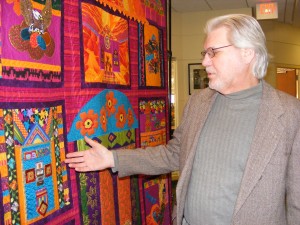
Advocate, educator and Westchester Arc Executive Director Ric Swierat witnessed a metaphorical transformation of his organization serving the developmentally disabled.
In his days working as an Arc employee in Ulster and Sullivan counties in the 1970s, change was tied to civil rights.
“In 1975, we were closing down institutions in the state,” Swierat said. “We had 20,000 people in institutions. Today, I think that number is between 600 to 800. People were not comfortable and knowledgeable about people with developmental disabilities in those days. Special-education classes were still isolated and segregated. When I taught special-education classes, we always had class in the back of the building next to the boiler room.”
Swierat, who now entertains collegiate audiences in more optimal conditions at Western Connecticut State University”™s Ancell School of Business, said that special needs in the 1970s meant group homes and a struggle to get the government to pay attention to a growing need.
Now, there is financial support and recognition in the system. Developmental disabilities are no longer taboo.
Swierat joined Westchester Arc in 1983 at the original Westmoreland Avenue headquarters, The Herbert Katzenberg Center in White Plains.
“This was a building we were in for 40 years,” Swierat said. “It was a sheltered workshop at one point. It was a six-story industrial building on an industrial block and that was somewhat intentional.”
As time went on ”“ both temporally and figuratively in the field of research and opportunity for the disabled ”“ the organization became more and more of a proponent for self-advocacy under Swierat”™s leadership.
“We began to explore the changing issues in our families and the changing desire of society to engage with people with disabilities,” he said. “We recognized we did not have isolated settings anymore. The community was our classroom and our workplace.”
In the fall of 2008, Westchester Arc made the historic move from Westmoreland Avenue to 265 Saw Mill River Road in Hawthorne.
The 45,000-square-foot Gleeson-Israel Gateway Center was designed with the theme of running water in mind to symbolize openness and opportunity both for the organization and the individuals they served.
“The building itself was designed as a metaphor with entry points and exit points,” Swierat said. “Nobody stays here all day. They may come here for an art lesson or for a social activity or to meet with a counselor to plan something next in their life.”
The nonprofit”™s new headquarters also served as a hub where more than 700 Arc workers start their journey of job placement into a work setting ”“ the organization has 250-plus corporate partners.

Westchester Arc”™s work has crossed industry channels.
Workers have turned recovered items from storm damage into reclaimable garbage that made recycling part of the corporate revenue structure at ConEdison.
They have helped streamline property records at the Westchester County Clerk”™s office.
And they have contributed to the inner workings of law offices such as Boies, Schiller & Flexner L.L.P. in Armonk.
In addition to providing avenues for gainful employment and volunteerism, the nonprofit is a strong believer in education and activism through its new Transitions website and planned Leadership Institute; the organization will this year undergo a brand name change to Arc of Westchester.
Swierat, who was presented a Lifetime Achievement Award in 2009 by NYSARC, which represents the 55 Arc bodies throughout New York state, credited self-advocacy as one of his greatest personal triumphs.
“It took awhile for people to realize that folks with developmental disabilities can speak up on their own behalf and we have to pay attention to it.”



















